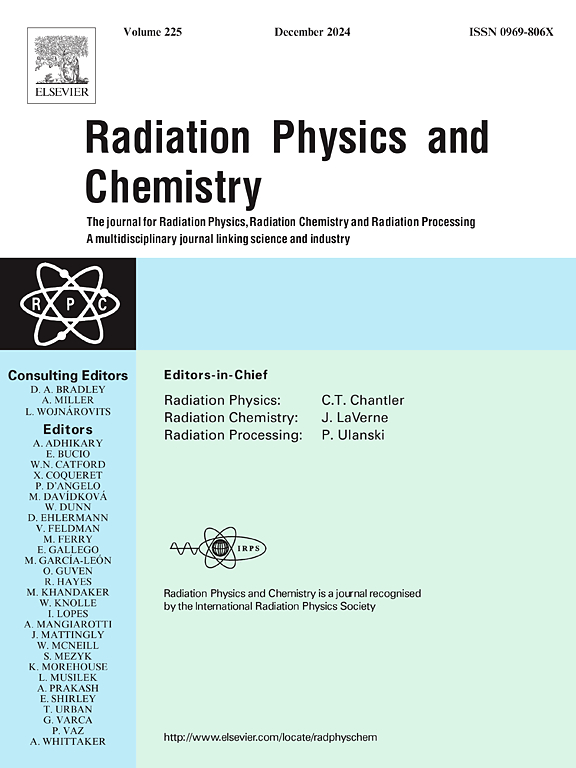Influence of replacement trace amounts of B2O3 with Nd2O3 on the optical, shielding, and structural parameters of lanthanum-based borate glass
IF 2.8
3区 物理与天体物理
Q3 CHEMISTRY, PHYSICAL
引用次数: 0
Abstract
In this study, small amounts of Nd₂O₃ were introduced into lanthanum borate-based glass based on the substitution principle according to the chemical formula (95-x)B₂O₃-5La₂O₃-xNd₂O₃ (0 ≤ x ≤ 2 mol%). The traditional melting method was used to prepare the investigated solids, while the bulk density measurement, (XRD), (FTIR), and (UV–Vis.) absorption techniques were used in the characterization process. The bulk density value changed from 3.09 to 4.31 g/cm³ when the Nd₂O₃ increased from 0 mol% to 2 mol%. The XRD patterns, in the range 10°–80°, confirm a glassy phase characterized by short-range order, with Nd doping causing peak shifts and intensity reductions, indicating increased bulk density and strain. FTIR, in the range 1700-400 cm−1, analysis reveals vibrational modes associated with borate groups and Nd₂O₃-induced transformation of BO₄ to BO₃ units, reflected in structural parameter changes (N₄ decreased, N₃ increased). The optical absorption spectra, in the range 300–900 nm, normalized for comparative analysis, show Nd³⁺ ions' strong absorption due to their partially filled 4f orbitals. Nd₂O₃ incorporation shifts absorption edges, induces f-f transition peaks (348–876 nm), and increases optical absorbance intensity. Optical band gap calculations using Tauc’s relation reveal an unexpected increase from 3.47 eV to 3.7 eV for electronic direct-transitions and from 3.18 eV to 3.31 eV for electronic indirect-transitions. Such abnormal behavior attributed to energy band separation broadening and enhanced Nd³⁺ absorption. The γ-ray shielding parameters (LAC), (Zeff), and (ΣR) improve significantly with higher Nd₂O₃ content, demonstrating the glass system's suitability for radiation shielding applications. Glass samples with maximum Nd₂O₃ content (x = 2) show superior γ-ray and neutron shielding efficiencies compared to other materials, highlighting their potential for optoelectronic, photonic, and radiological applications.
求助全文
约1分钟内获得全文
求助全文
来源期刊

Radiation Physics and Chemistry
化学-核科学技术
CiteScore
5.60
自引率
17.20%
发文量
574
审稿时长
12 weeks
期刊介绍:
Radiation Physics and Chemistry is a multidisciplinary journal that provides a medium for publication of substantial and original papers, reviews, and short communications which focus on research and developments involving ionizing radiation in radiation physics, radiation chemistry and radiation processing.
The journal aims to publish papers with significance to an international audience, containing substantial novelty and scientific impact. The Editors reserve the rights to reject, with or without external review, papers that do not meet these criteria. This could include papers that are very similar to previous publications, only with changed target substrates, employed materials, analyzed sites and experimental methods, report results without presenting new insights and/or hypothesis testing, or do not focus on the radiation effects.
 求助内容:
求助内容: 应助结果提醒方式:
应助结果提醒方式:


